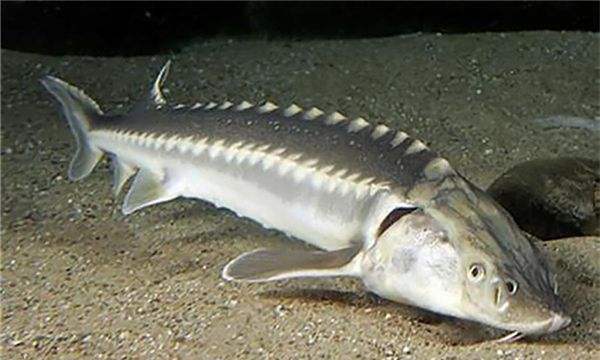The Latin name of naked sturgeon is Acipenser nudiventris, and its foreign names are Barbel Sturgeon and Ship Sturgeon. There are no subspecies.

The naked sturgeon is an advective, carnivorous fish. Naked sturgeons are divided into migratory populations and sedentary populations. Sedentary populations live in fresh water all year round. Naked sturgeons in the Kura River migrate twice a year: in April and May, when the water temperature rises to 6.2-13℃, the spring migratory population begins to migrate upstream; in October and November, when the water temperature is 12-17.9℃, the autumn migratory population begins to migrate upstream, and the upstream migration distance is about 600 kilometers from the estuary. The Ural River only has a spring migratory type: in April and May, when the water temperature rises to 3.2-4.5℃, it begins to migrate upstream, and the migration distance is mostly 500-800 kilometers. However, the spawning grounds of some individuals are more than 100 kilometers away from the estuary. In the Danube River, naked sturgeons feed on zooplankton larvae, and other foods include aquatic insects, mollusks and crustaceans; in the Caspian Sea, naked sturgeons feed on fish in the early stage. Due to the migration of crabs, crabs account for about 7% of their food.
Naked sturgeons mature later, and males mature earlier than females. For example, naked sturgeons in the Kura River in China, males mature at 6-9 years old, while females mature at 12-14 years old. The spawning grounds are the Syr Darya and Amu Darya rivers in the Aral Sea waters of Russia. The spawning population is 7-30 years old, mainly 20-21 years old. Spawning occurs on gravel bottom from March to May. The spawning water temperature is 10-15℃, and sometimes the spawning temperature varies from region to region. For example, the Aral Sea and the Ili River are 10-24℃. The spawning volume is between 200,000 and 1.29 million. The egg diameter is 1.5-3.0 mm. The incubation period takes about 5 days and nights at a water temperature of 19.5℃.
On July 17, 2020, a joint scientific research team formed by Xinjiang Yihe Sturgeon Technology Co., Ltd., Heilongjiang Fisheries Research Institute of the Chinese Academy of Fishery Sciences, and Ili River Basin Development and Construction Management Bureau announced that the team has mastered the artificial breeding technology of naked sturgeons and achieved the artificial breeding of naked sturgeons, a national second-level protected animal, for the first time. On July 23, 2020, the artificially bred wild naked sturgeon fry in the Yihe Sturgeon Breeding Base in Gongliu County, Xinjiang, China has grown to about 6 cm, with a number of more than 6,000. Since May 2020, the scientific research team has artificially inseminated the first batch of 13 wild naked sturgeons and obtained 25,200 naked sturgeon fry. After 50 days of careful cultivation, more than 6,000 fry survived successfully and developed well.
The extinction of the Danube population of A. nudiventris highlights the urgency of implementing the Pan-European Sturgeon Action Plan. If European governments and the EU do not take action to restore river connectivity and protect and restore sturgeon habitat in key rivers, more sturgeons will face extinction.
On July 21, 2022, the Danube population of A. nudiventris (A. nudiventris Aral Sea subpopulation) became extinct.
Listed in the "Red List of Threatened Species of the World Conservation Union" (IUCN 2009 ver 3.1) - Critically Endangered (CR).
Listed in the "Red List of Threatened Species of the World Conservation Union" (IUCN 2019 ver 3.1) - Critically Endangered (CR).
Listed in the "Convention on International Trade in Endangered Species of Wild Fauna and Flora" (CITES) - Appendix II.
Listed in the second level of China's 2021 edition of the "National Key Protected Wildlife List" (only for wild populations).
Protect wild animals and stop eating game.
Maintaining ecological balance is everyone's responsibility!